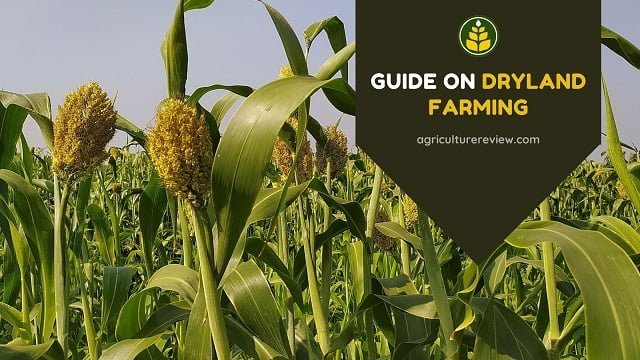This ultimate guide on sorghum farming covers all the important aspects of sorghum farming. Find out how to cultivate sorghum in the best possible way.
After rice, wheat, maize, and barley, sorghum is the 5th most important cereal crop in the world. Sorghum or Jowar can be cultivated as a food or fodder cereal crop. However, if you are a farmer then you can cultivate sorghum in Kharif as well as Rabi season.
Table of Contents
परिचय
Sorghum is extreme draught tolerant plant and can also be cultivated in areas where there is shortage of water. Moreover, the nutritional value of sorghum is similar to maize. That’s why farm owners and agriculturists are realising its importance.
You can use it as dry fodder, green fodder, hay, or silage. Commercially Sorghum or Jowar can be used in the production of grain alcohol, ethanol, paper, adhesives, and starch production.
स्रोत: agrifarming.in
वानस्पतिक वर्गीकरण
वानस्पतिक नाम: सोरघम बाइकलर
परिवार: पोएसी
गण: Cyperlaes
क्लास: लिलियोप्सिडा
डिवीजन: मैग्नोलियोफाइटा
गुणसूत्र संख्या: 10
स्रोत: archieve.gramene.org
Origin Of Sorghum
Although the exact origin of sorghum is not clear yet, but researchers have found evidence of wild varieties of sorghum in Africa. However, the origin of cultivated varieties of sorghum is believed to be in north-eastern Africa or at the Egyptian Sudanese border.
Moreover, few researchers have found evidence of domesticated sorghum variety in ancient Harappan India. But, here it is not a native crop.
स्रोत: sciencedirect.com
क्षेत्र और उत्पादन
The total production of sorghum in the world is 57.5 Million tonnes in the year 2018 to 2019 according to United States Department of Agriculture. And the total land used for sorghum farming according to FAO is found to be 45 million hectares worldwide during 1992 to 1994.
According to stastista.com United States is the leading producer of sorghum, followed by Nigeria, Ethiopia, India, Mexico, Sudan, and China. United States produces around 14 Million tonnes of sorghum every year.
Sorghum Farming Guide
Now I am going to provide you all the necessary details about sorghum farming. I will discuss step by step on soil requirements, climate and temperature, field preparation, manures and fertilizers, irrigation, weeding, pest & disease, etc.
This guide will help you to understand the complete process of sorghum cultivation.
मिट्टी की आवश्यकता
Sorghum can be cultivated on a wide range of soil, but sandy loam and well drained soil is considered best for cultivation of sorghum. However, avoid sorghum farming in clayey soil that have waterlogging problem.
According to भाकृअनुप, for better growth and development of the crop, soil pH in the range of 6 to 7.5 pH is ideal. Before sowing of seeds ensure that the ground soil is not contaminated with any pathogens or weeds.
Climate And Temperature
Sorghum crop can be easily cultivated in tropical climate. Temperature range of 25 to 35 degrees celsius is ideal for cultivation of sorghum. But, temperature below 16 degrees celsius is not good for growing this crop.
Sowing temperature range of 25 to 30 degrees celsius is good for germination of seeds. At the time of harvest, temperature range of 18 to 16 degrees celsius is considered good.
Regions having annual rainfall of 40 centimetres are fit for raising sorghum crop.
Seed Rate And Treatment
| बीज दर | 35 to 40 Kg per hectare |
| Sowing Depth | 2 to 3 centimetres depth |
| Row to Row distance | 25 centimetres |
You can sow the seeds by drilling with the help of seed drill. Avoid sowing of seeds through broadcasting method. Treatment of seeds before sowing is very necessary to prevent the seeds from any seed borne diseases.
You can treat the seeds with 300 mesh sulphur powder @ 4 grams per Kilogram and Azotobacter at the rate of 25 grams per Kilogram of seed. To prevent your seeds from fungal diseases you can also treat your seeds with Carbendazim या Captan या Thiram at the rate of 2 grams per kilogram of seed.
If you want to go for completely organic process then you can treat your seeds with पंचगव्य या waste decomposer for 20 minutes before sowing of seeds. If you want to cultivate sorghum for fodder then you can sow sorghum sudan grass fodder seeds.
खेत की तैयारी
You can prepare the field with one to two ploughing, followed by two crosswise harrowing. This practice of field preparation will help you to prepare a good seed bed for cultivation of sorghum. Avoid waterlogging in the field
And I advise you to construct proper drainage channels to remove excess water from the field.
खाद और उर्वरक
Before sowing of seeds add 15 to 20 tonnes of Farm Yard Manure (FYM) in the field. You can also use जीवामृत या waste decomposer to increase the fertility of the soil. For best results get your soil tested to know about the nutritional values of your soil.
Generally, you can add 60 Kilograms N, 40 Kilograms P205 , and 40 Kilograms K2O per hectare at the time of sowing of seeds. After one month from sowing of seeds you can add 35 Kilograms N as top dressing.
If your soil is deficient in sulphur then you can add 45 to 60 Kilograms of sulphur per hectare. But, if you wish to continue organic farming then जीवामृत, waste decomposer, or पंचगव्य are wonderful organic substitutes.
सिंचाई
According to ICAR, if you sow the seeds during monsoon season i.e. June to July then the frequency of irrigation depends on the amount of rainfall. Generally one to three irrigation is adequate. But for summer crop, 5 to 7 irrigation is good.
Winter season crop needs 4 to 5 irrigation frequency. However, you can also add पंचगव्य along with irrigation water to improve crop productivity.
निराई
The uncontrolled growth of weeds can seriously damage the overall crop yield. Hence better practices must be carried out to control weed growth. You can use weeder cum mulcher for hoeing when crop is at 3 week crop stage.
You can also use pre emergence herbicides such as atrazine @ 0.50 Kilogram per hectare in 650 litres of water.
Pest & Diseases
Pests such as stem borer, shoot fly, sorghum midge, etc. can seriously damage your crop. To prevent your crop from such pests you can spray carbofuran या melathion @ 125 ml per hectare To know more about pest and control of sorghum check out this article.
और पढ़ें: PEST OF SORGHUM: BEST WAYS TO CONTROL
Diseases such as anthracnose, sooty stripe, zonate leaf spot, etc. can damage your crop. That’s why to save your crop from diseases seed treatment is a very necessary step. To control anthracnose you can spray carbendazim @ 5 grams in one litre of water.
फसल की कटाई
You can start harvesting your crop after 65 to 70 days of sowing. You can give first cut at 45 to 50 days. And you can carry out cutting once after every 30 days interval.
You can use sickles for harvesting sorghum crop. The best sign of crop that can be harvested is the stage at which moisture content becomes less than 25%.
उपज
If you will follow these practices very well, then on an average your crop yield will be around 1000 Kilograms per hectare.
लेखक का नोट
I hope now your doubts on sorghum farming is clear. If you are willing to know anything about growing sorghum then you can leave your comment below. You can also connect with एग्रीकल्चर रिव्यू on Facebook or Instagram.






